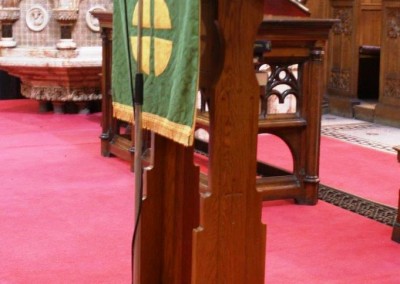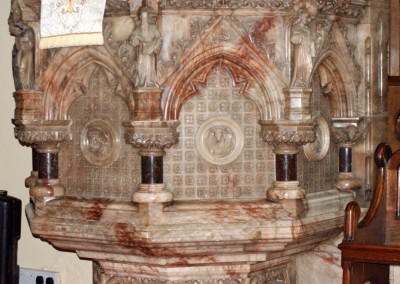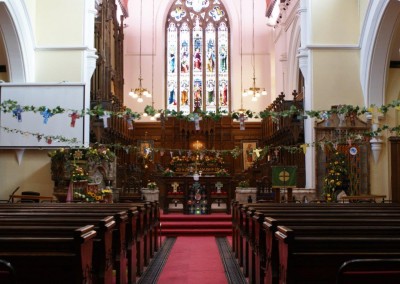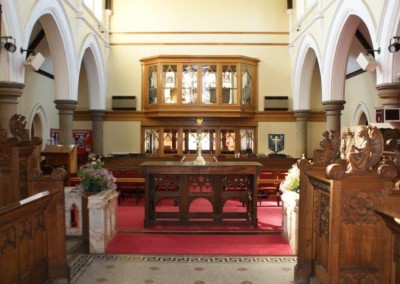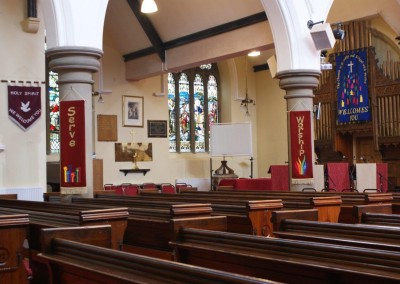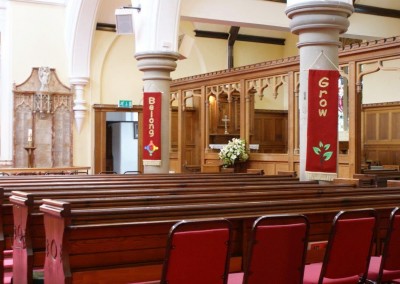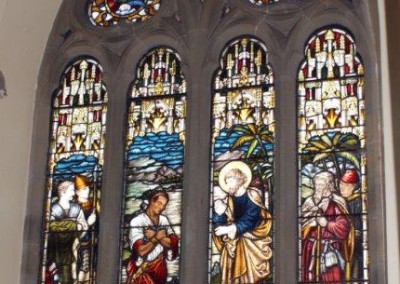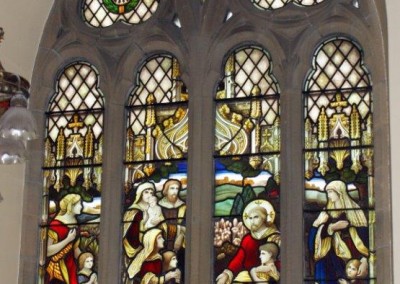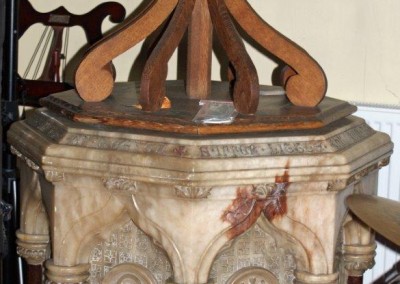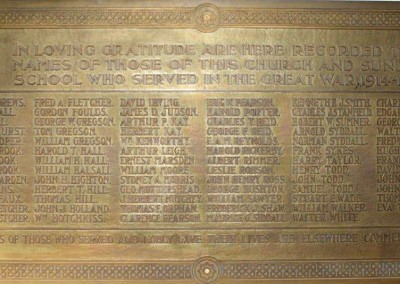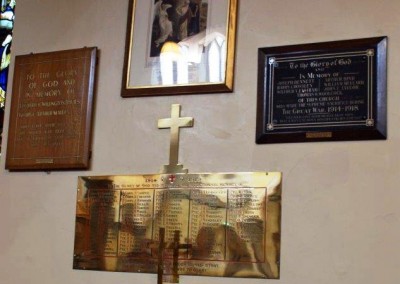The platform and pulpit
During the reordering in 2000, a new platform area was created where the Communion table stands (39). This table came from Southbank Road, and was a very significant sign of our coming together as an LEP (Local Ecumenical Partnership) in unity, as the agreement was that it became the table on which the bread and the wine are placed, and around which the congregation receive the bread and the wine, rather than the previous custom of the St Philip & St Paul’s congregation to do so at the high altar. The two wooden chairs also came from Wesley Southbank Rd. The lectern, from where most services are led nowadays, was donated by Mrs Martha Cooke in memory of her husband Harold (40) and the lectern falls donated by Margaret Hesketh.
The pulpit, which sits on the other side of the platform is sculpted in alabaster (41). It stands on seven marble pillars. In four niches are statues of the four evangelists, depicted according to the symbolism in the book of Revelation. The pulpit, like the font and communion table, was the gift of Edith and Alice Macrae. Above it is a recent addition to the building , a modern screen, onto which we project liturgy and song words in many of our morning services (42).
As you look down the nave (43), with 10 pews either side of the central aisle, you will be able to look through to the Wesley Lounge, but also see the balcony of the St Paul’s Hall which looks out over the carpeted worship area. Recent additions to the worship areas are fabric banners on the pillars which display four symbols for our church’s 2020 Vision: Worship, Belong, Serve and Grow (44/45). Some of the high–level old clerestory windows were in a bad state of repair and were replaced in 2008 as part of a building repair and improvement project, supported by English Heritage.
Please scroll down the page to learn about the North Transept
North Transept
To the side of the nave, is the North transept, formerly known as the ‘Children’s Transept’. At its dedication, the Vicar said “The formation of Children’s Transept recognises the place of the rising generation within the main body of the Church and its life”. How very fitting it is that in the 21st century, this is where our young people often choose to sit in services and where our Youth band often play their instruments.
The North Transept houses two further stained glass windows. One depicts the Baptism of the Ethiopian Eunuch (46) and the other (47), Jesus blessing the little children. The former was given “To the glory of God and in loving memory of Louisa Higginbottom, for thirty years an earnest Church worker in this parish, who died May 5th 1909”. The other window was dedicated “to the glory of God and in loving memory of Edgar Nutt, who died Christmas Eve 1923”, by his wife Isabella. The North transept now houses the baby grand piano, which came from Wesley Southbank Rd, and an electronic organ, purchased in the 1990’s. Part of the reordering scheme of the building in 2000 involved the moving of the font (48) from the baptistery into the North Transept. Again it is made of alabaster, octagonal in shape and lined with lead. It stands on a base of marble, supported by eight cylindrical marble pillars and around the top are incised the words “Suffer the little children to come unto Me and forbid them not, for of such is the Kingdom of Heaven” and on each of the eight sides are symbolic emblems connected with the Christian faith. On the wall between the two stained glass windows are several war memorial plaques which came from Wesley Southbank Rd. Three of them commemorate those who lost their lives in the Great War and one from the Second World War (49/50).

